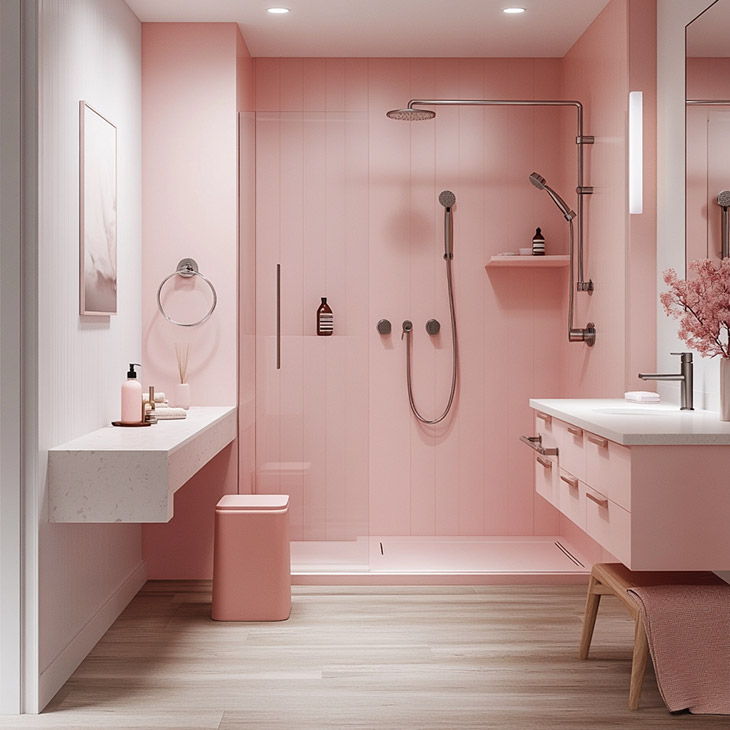
Designing a bathroom that caters to the needs of elderly users doesn’t mean compromising on style. The bathroom is one of the riskiest areas in the home for seniors, but with some thoughtful modifications, you can create a space that combines safety, accessibility, and modern design. This guide explores how to achieve this balance with practical, stylish ideas.
1. Prioritise Safety Features
When designing a bathroom for seniors, safety is paramount. However, that doesn’t mean you have to settle for a dull or unattractive design. Here’s how to make a bathroom safe while maintaining a stylish look.
Non-Slip Flooring
Bathrooms are naturally slippery, especially around wet areas like showers and bathtubs. Falls are one of the leading causes of injury for seniors, so investing in non-slip flooring is a must. Materials like textured ceramic tiles and vinyl offer excellent grip. Textured tiles come in various patterns and finishes, so you can choose one that enhances the room’s design.
Walk-In Baths and Showers
Walk-in showers and tubs offer a safer alternative to traditional options with high steps. These are especially helpful for seniors with limited mobility. A walk-in shower with a low threshold minimises the risk of tripping and can be paired with frameless glass doors to create an open, modern look. You can also choose custom tiling and high-end fixtures to elevate the shower’s design while maintaining safety.
Walk-in baths for elderly people equipped with doors for easy entry are another fantastic option. They offer the benefits of traditional baths without the struggle of stepping over a high ledge. Some models even include therapeutic features like jets for a spa-like experience.
Grab Bars and Handrails
Grab bars are essential for providing support to seniors who may need help getting in and out of the shower or using the toilet. In fact, 42% of households that required home adaptations reported needing a handrail or grab bar in their kitchen or bathroom, highlighting just how important they are for safety.
While safety is the primary purpose, modern grab bars now come in various finishes that blend beautifully with your bathroom’s overall aesthetic. Some even come disguised as towel bars or soap holders, adding functionality without drawing attention to their true purpose.
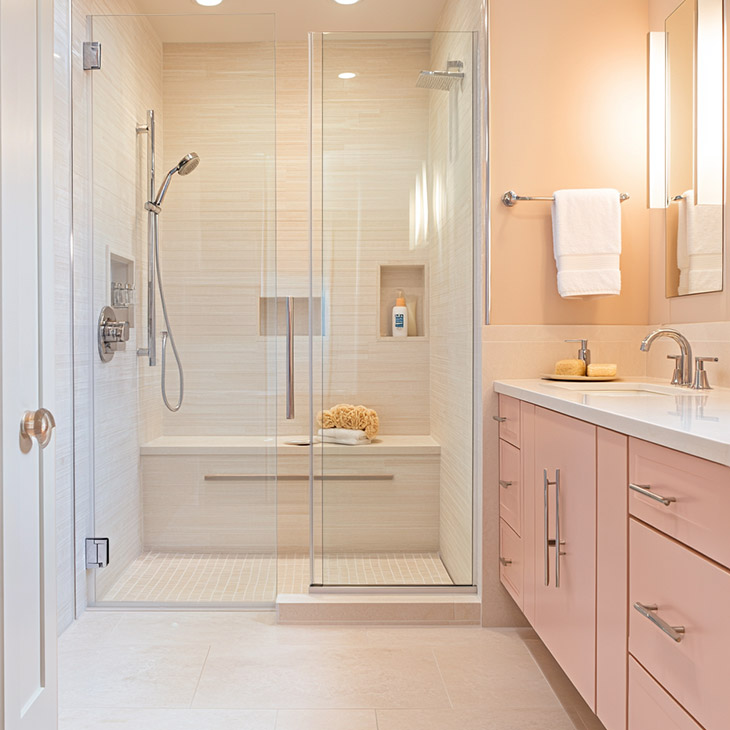
2. Accessibility Is Key
Accessibility is crucial when designing a bathroom for seniors, especially if mobility is limited. But just because a space is accessible doesn’t mean it can’t be stylish. There are many ways to incorporate accessibility features into your bathroom design without making it look clinical.
Wider Doorways and Lower Thresholds
If the bathroom door is narrow, consider widening it for easier access. A doorway at least 32 inches wide can make a huge difference in mobility. This modification doesn’t have to compromise the aesthetics of the room – you can opt for a sleek sliding door or a modern barn door for added style.
Lowering the threshold of your bathroom or shower entry also enhances accessibility. High thresholds can create a tripping hazard, especially for someone with balance issues. You can choose low-profile transitions that match your flooring material to keep the space cohesive.
Comfort-Height Toilets
Comfort-height toilets are typically about 17 to 19 inches tall, which is a few inches higher than standard toilets. This makes it easier for seniors to sit down and stand up without straining. Many modern toilet designs come in comfort-height versions, so you won’t have to settle for a clunky or unattractive model. Whether your bathroom has a sleek, minimalist vibe or a more traditional style, you’ll find comfort-height options that complement the look.
Adjustable Shower Heads
An adjustable or handheld shower head can make showering much easier for elderly individuals. Handheld options allow for greater flexibility and control, allowing users to shower when seated. These come in a wide range of finishes and styles, so you can choose one that matches your fixtures. For example, a rain shower head paired with a handheld attachment offers both luxury and practicality. You can also look for models with a built-in temperature control to prevent the water from getting too hot.
3. Let There Be Light
Lighting is crucial in making any bathroom safe, but it’s even more important for seniors whose vision may not be as sharp as it once was. A well-lit bathroom reduces the risk of accidents and makes the space more functional. However, you don’t have to choose harsh, unflattering lighting to achieve this.
Bright, Even Lighting
Consider layering your lighting for maximum effect. Overhead recessed lighting can provide general illumination, while vanity lights or sconces add task lighting for areas like the sink and mirror. LED bulbs are a great choice because they provide bright, even light while being energy-efficient and long-lasting. You can also find adjustable fixtures that allow you to change the intensity or warmth of the light depending on the time of day.
Nightlights and Motion-Sensor Lights
Nightlights and motion-sensor lights can be lifesavers for elderly users who need to use the bathroom at night. Motion-sensor lights eliminate the need to fumble for switches in the dark, reducing the risk of falls. These lights can be installed along baseboards or inside cabinets for a subtle glow that doesn’t disrupt sleep but still offers plenty of visibility. Many options blend seamlessly with the design of your bathroom, such as sleek, recessed nightlights that double as décor.
4. Seating and Stability
A bathroom designed for elderly users should offer seating and stability options to make daily routines easier. Fortunately, there are plenty of choices that fit beautifully into modern bathroom designs.
Shower Seats and Benches
Shower seats are essential for seniors with difficulty standing for long periods. You can opt for foldable shower seats that tuck away when not in use or a built-in bench that adds function and style. Materials like teak or stone can give the shower a spa-like feel while providing much-needed seating. Make sure the surface is non-slip and water-resistant to ensure safety.
Pair the seat with grab bars and a handheld showerhead for added convenience and safety. Some benches even include storage space for soap, shampoo, and other essentials, reducing clutter and keeping everything within easy reach.
Non-Slip Mats and Rugs
Even with non-slip flooring, it’s a good idea to add extra stability with non-slip mats in areas prone to getting wet, such as just outside the shower or near the sink. Plenty of stylish non-slip rugs are available that will blend with your décor – no need to settle for plain rubber mats. Look for options that match your colour scheme, such as plush, water-resistant mats with non-slip backing.
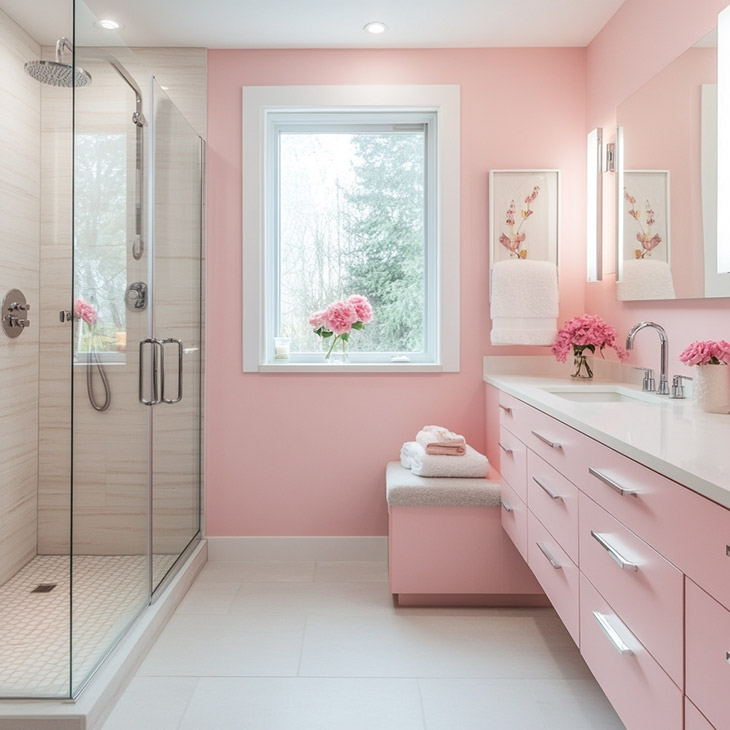
5. Smart Technology for Added Comfort
Smart technology has revolutionised home design, and the bathroom is no exception. There are plenty of tech-savvy solutions that make the bathroom more convenient and safer while also elevating the overall design.
Temperature-Controlled Faucets
A major concern is the risk of accidental burns from hot water. Temperature-controlled faucets or mixing valves can regulate water temperature, preventing scalding. These faucets come in stylish designs, including touchless models that minimise the need for turning knobs – ideal for those with arthritis or limited hand strength.
Smart Toilets
From heated seats to automatic flushing, bidet functions, and even built-in nightlights, smart toilets are an excellent option for seniors. These advanced models come in sleek designs that fit easily into any modern or traditional bathroom aesthetic. While they’re a bit of an investment, the convenience and safety features they offer make them worth considering.
6. Don’t Forget the Design
Just because you’re prioritising safety and accessibility doesn’t mean you have to give up on style. A well-designed, elderly-friendly bathroom can be both functional and visually appealing.
Neutral and Calming Colour Palettes
Soft, neutral colour palettes work beautifully in any bathroom. Shades like beige, light grey, soft blues, and whites create a serene and calming atmosphere, which can promote relaxation. Interestingly, a recent survey found that white bathrooms are the most popular choice and can actually boost a home’s value by an average of 3%. On the flip side, bold colours like red can decrease a home’s value, with an average loss of 4.1% when used in bathrooms.
Space-Saving and Decluttering Solutions
Keeping the bathroom free from clutter is important for preventing accidents. Built-in storage solutions like recessed shelves, floating vanities, or corner cabinets help keep things organised without wasting valuable floor space. Choose minimalist designs to keep the room sleek and modern while ensuring all essentials are easily accessible.
Designing a Bathroom for Safety and Style
Designing an elderly-friendly bathroom doesn’t mean sacrificing style or comfort. By focusing on safety, accessibility, and smart design choices, you can create a functional and beautiful space. Whether you’re renovating for yourself or a loved one, these design ideas will ensure the bathroom is a place of safety, ease, and style.
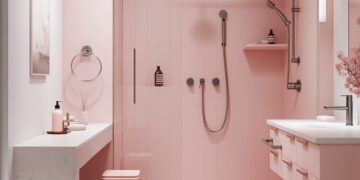












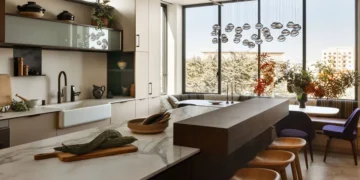
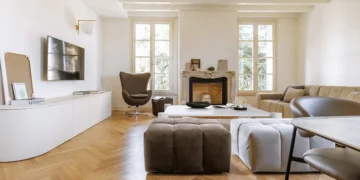
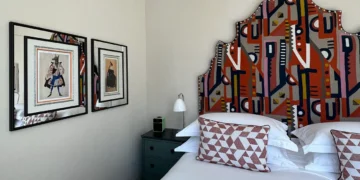
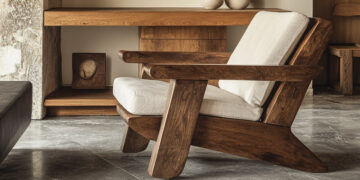


bathroom design especially for elderly must be thought through, but even if you are designing for a younger family you need to take so many things into account. Bathrooms should not be redesigned every few years.